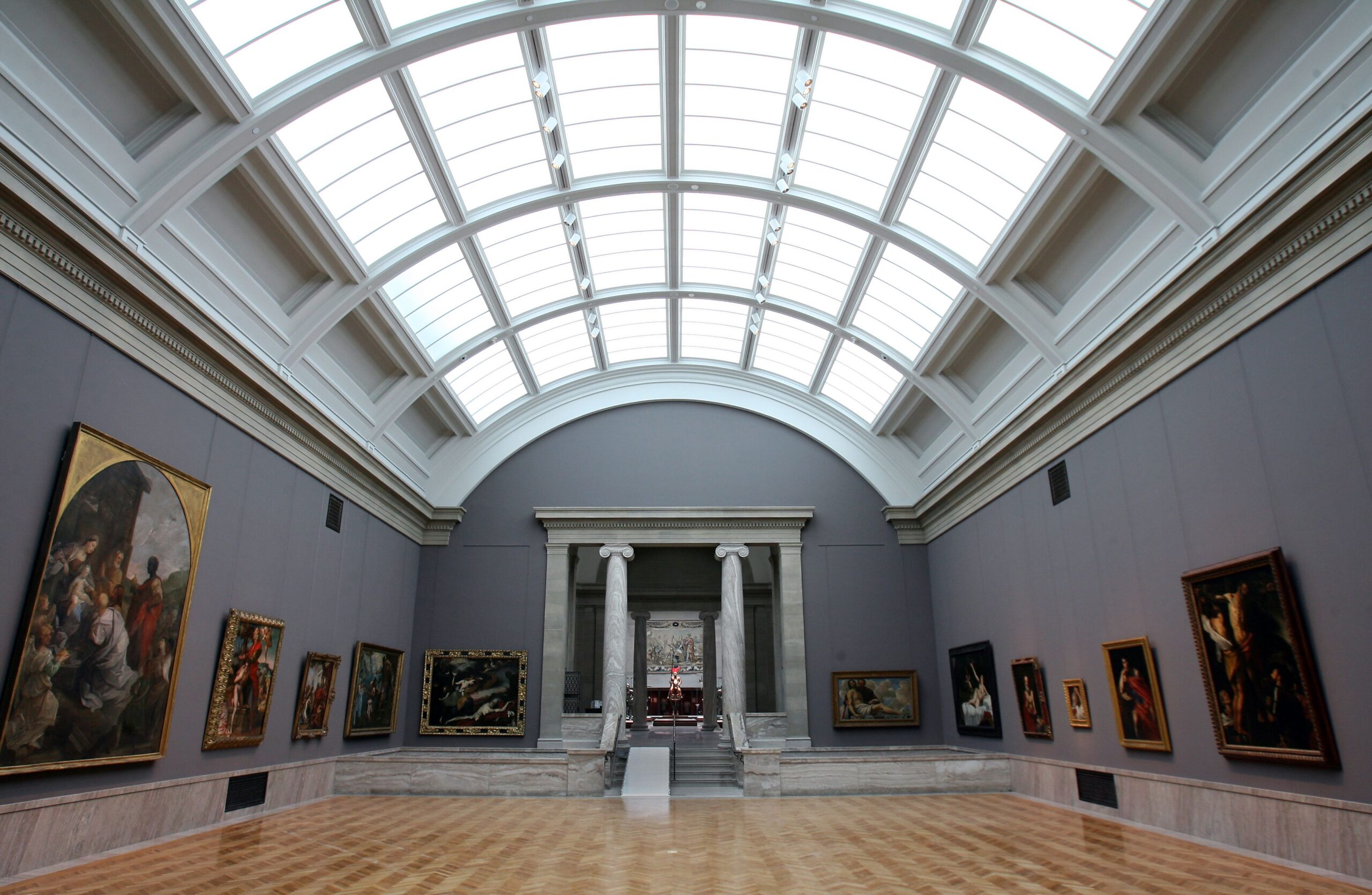The Cleveland Museum of Art continues to actively engage with the global art market despite travel restrictions related to the COVID-19 pandemic. The museum has recently made important acquisitions that it looks forward to sharing with its visitors in the months ahead.
Recent acquisitions include three objects in stone and ceramic that enhance the museum’s collection of Pre-Columbian art; a pair of folding screens by Watanabe Shikō, a pioneer of scientific realism in 18th-century Kyoto; a pastel portrait by Simon Vouet who took inspiration from Guido Reni and Caravaggio; a rare portrait of Pierre-Auguste Renoir by Impressionist Frédéric Bazille; and five photographs by Shawn Walker and Chester Archer Higgins Jr. that build upon the CMA’s broad commitment to diversifying its collections.
Reclining Dog Vessel; Plate with Supernatural Being;
Square Bowl with Pampas Cats
Three objects enhance the museum’s collection of Pre-Columbian art
The Reclining Dog Vessel is a major addition to the CMA’s collection of Chimú and Chimú-Inka arts. The vessel represents a Peruvian hairless dog that has recently given birth. The dog is depicted cocking its head backward and raising a rear leg to scratch its ear, its mouth parted in concentration and its forepaws grasping the edge of the rectangular chamber. The meanings of such dogs may be connected to the trade networks that brought them to Peru from the north in the late pre-Hispanic period. The vessel, which incorporates a whistle at the base of the broad strap handle, is one of a tiny group of similar vessels distinguished by their refined realism and craftsmanship. It was made on Peru’s north coast, probably after the Inka descended from their stronghold in the Andes Mountains to conquer the coastal Chimú Empire in the 1460s. It will be included in an upcoming CMA exhibition that traces the Chimú Empire from its founding in the year 1000 through the arrival of the Inka to the Spanish conquest in 1532.
The Cupisnique (koo-piz-nee-kay) culture of the first and second millennia BC created the earliest corpus of imperishable art works on Peru’s north coast. The most complex artistic expressions of Cupisnique cosmology occur on stone vessels and plates like this Plate with Supernatural Being. Cupisnique stone plates are rare, and this plate is outstanding among them, based on the clarity of carving, its realistic modeling, and a complexity of imagery. With its acquisition, it has become the most important object in the museum’s early north coast collection.
The exterior is very finely carved with a supernatural feline creature identified as a sacrificer by the expressive severed human head it holds in its clawed paws. The creature’s head features a divided eye along with two fanged mouths, one at the back of the head from which a pair of human legs and a human hand dangle. Other elements in the composition tie the sacrificer and death to the earth’s fertility.
Ceramic was an important artistic medium for the Paracas, an early village culture of Peru’s south coast. They often decorated their fine ceramics with geometric representations of the native Pampas cat, a small, wild, reclusive feline that lives on the margins of agricultural fields. The Square Bowl with Pampas Cats features two iterations of the Pampas cat that alternate on the sides of the bowl; both have characteristic spotted bodies and banded limbs and tails. Because Paracas paint was applied after firing and thus is not bonded to the surface, it is fragile and often flakes away; however, this vessel is very well preserved—the paint retains a thick, intact crust.



Comment here